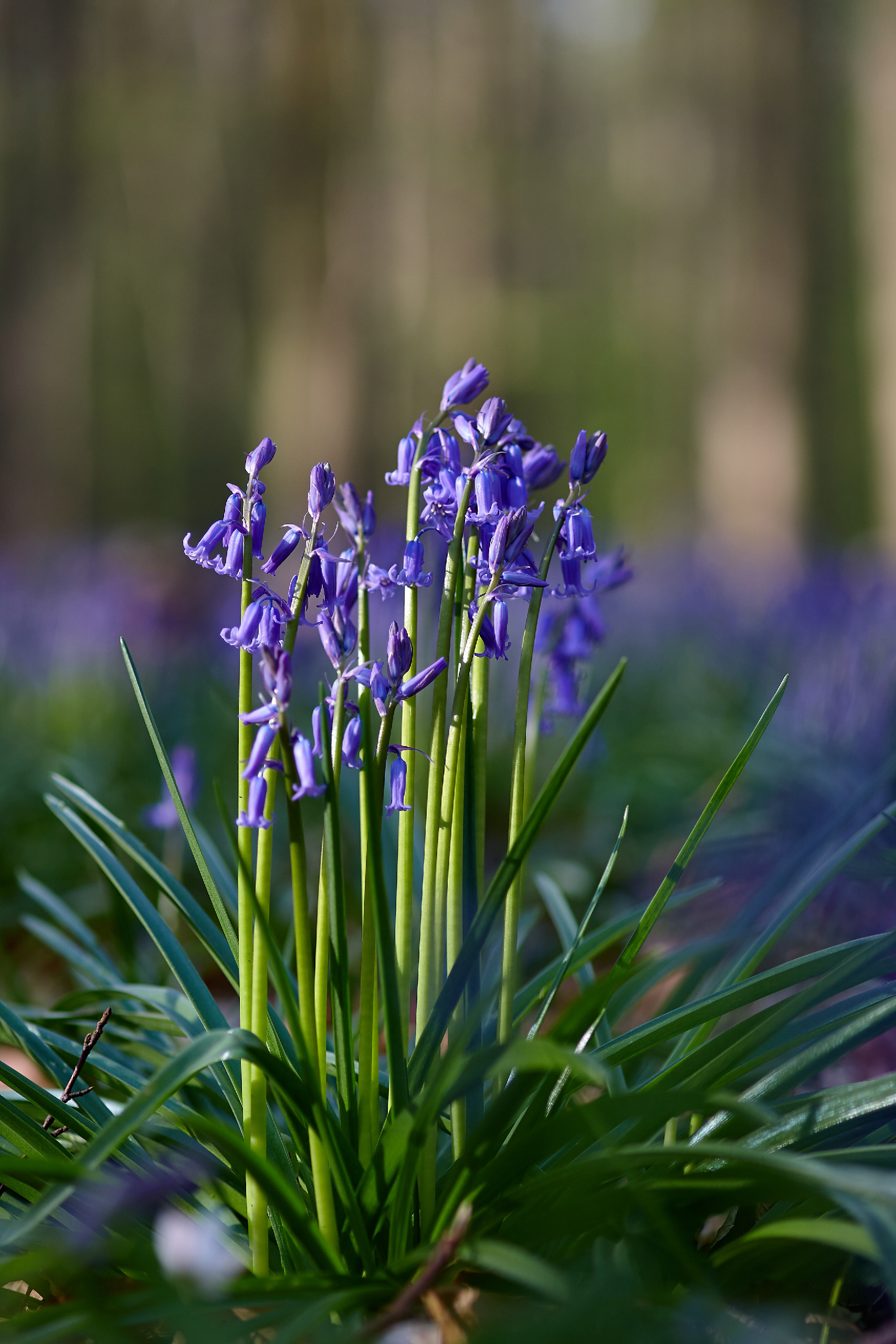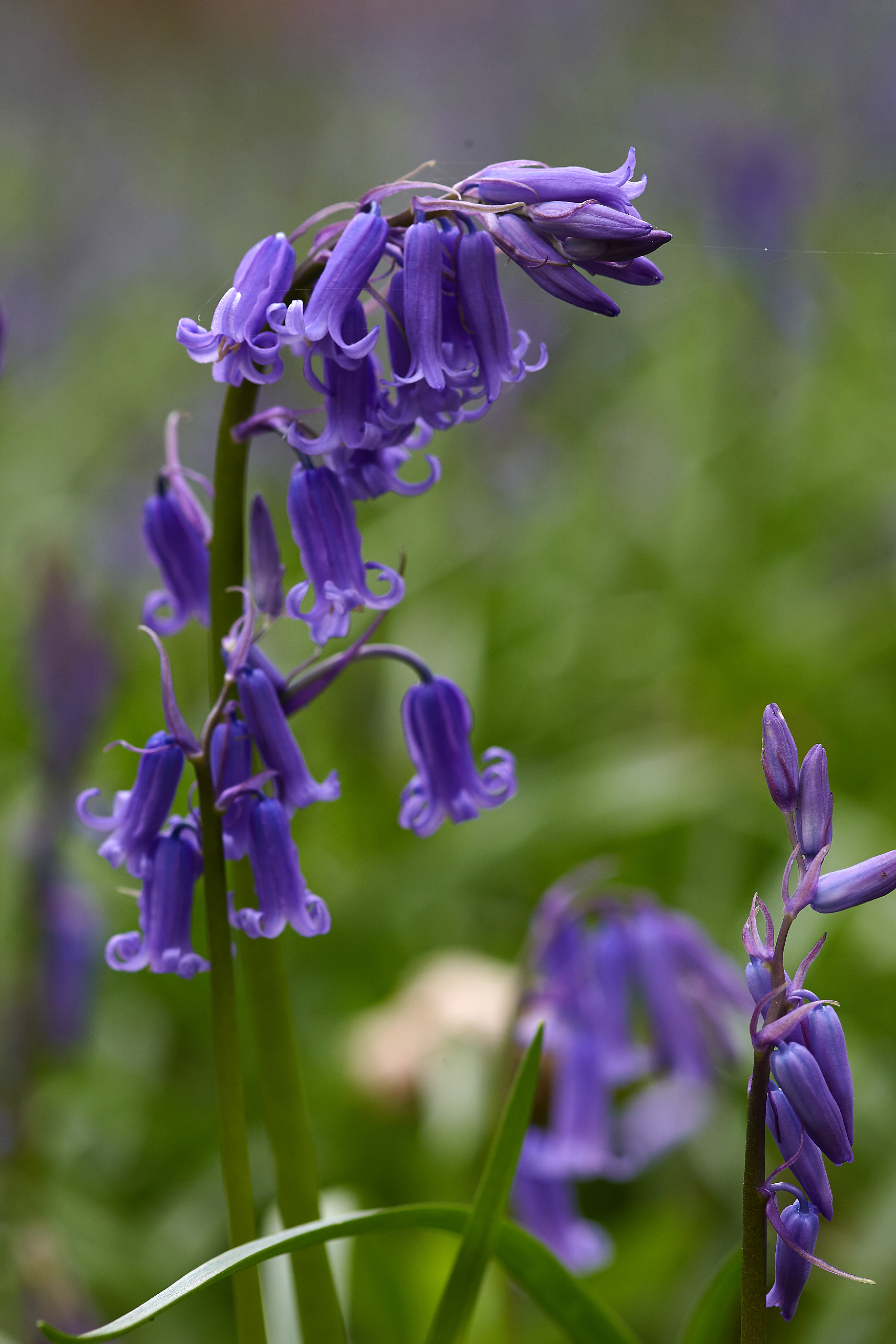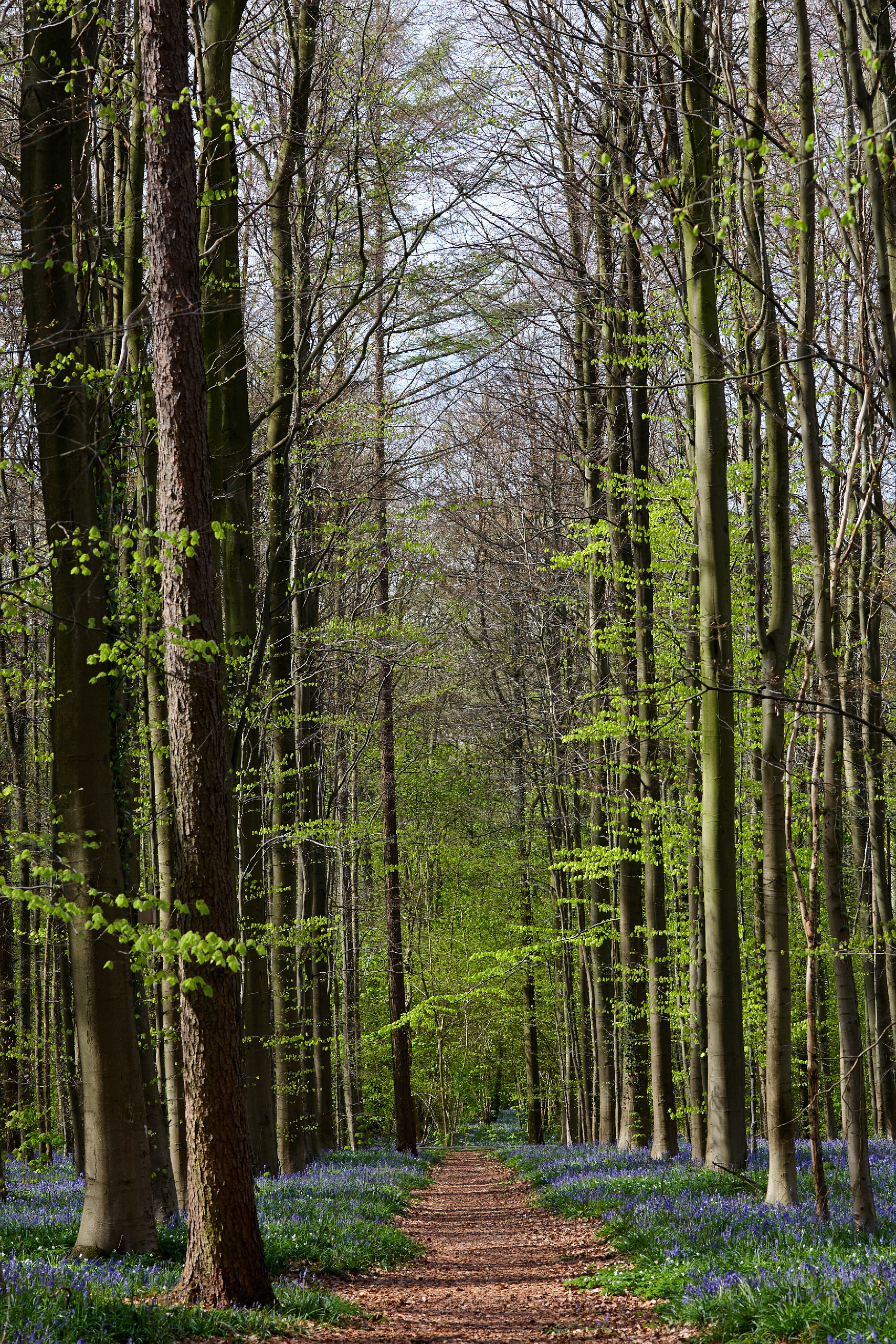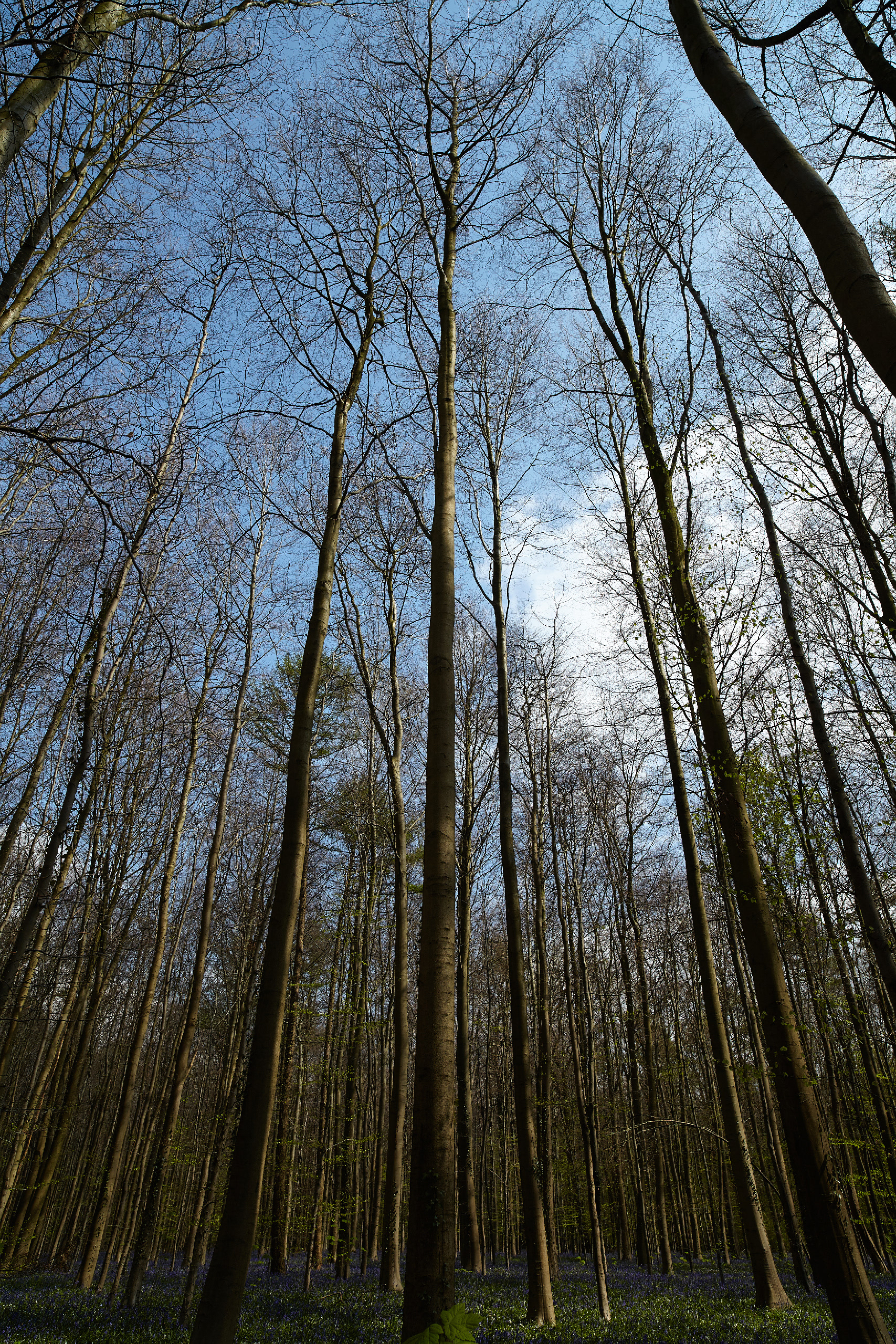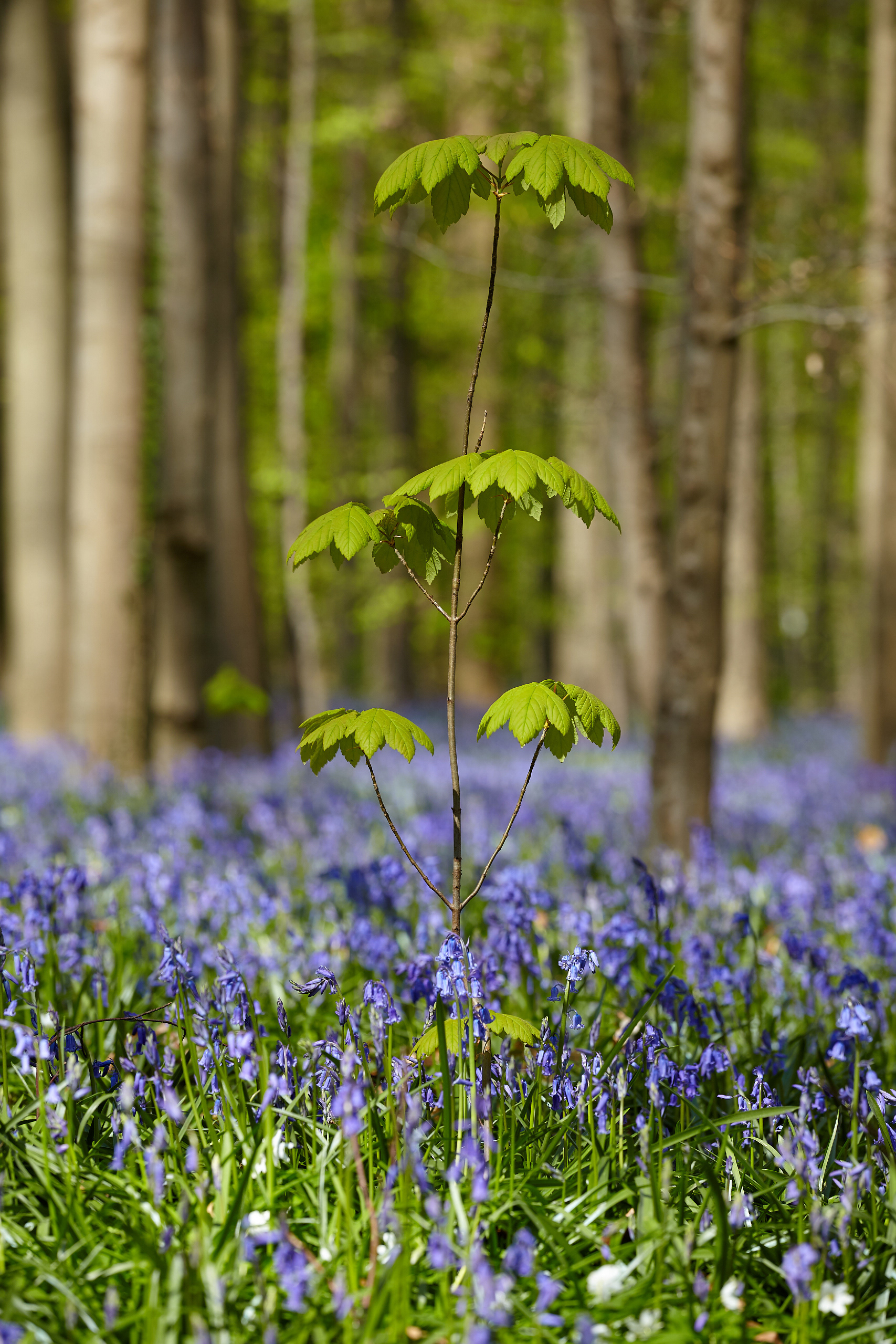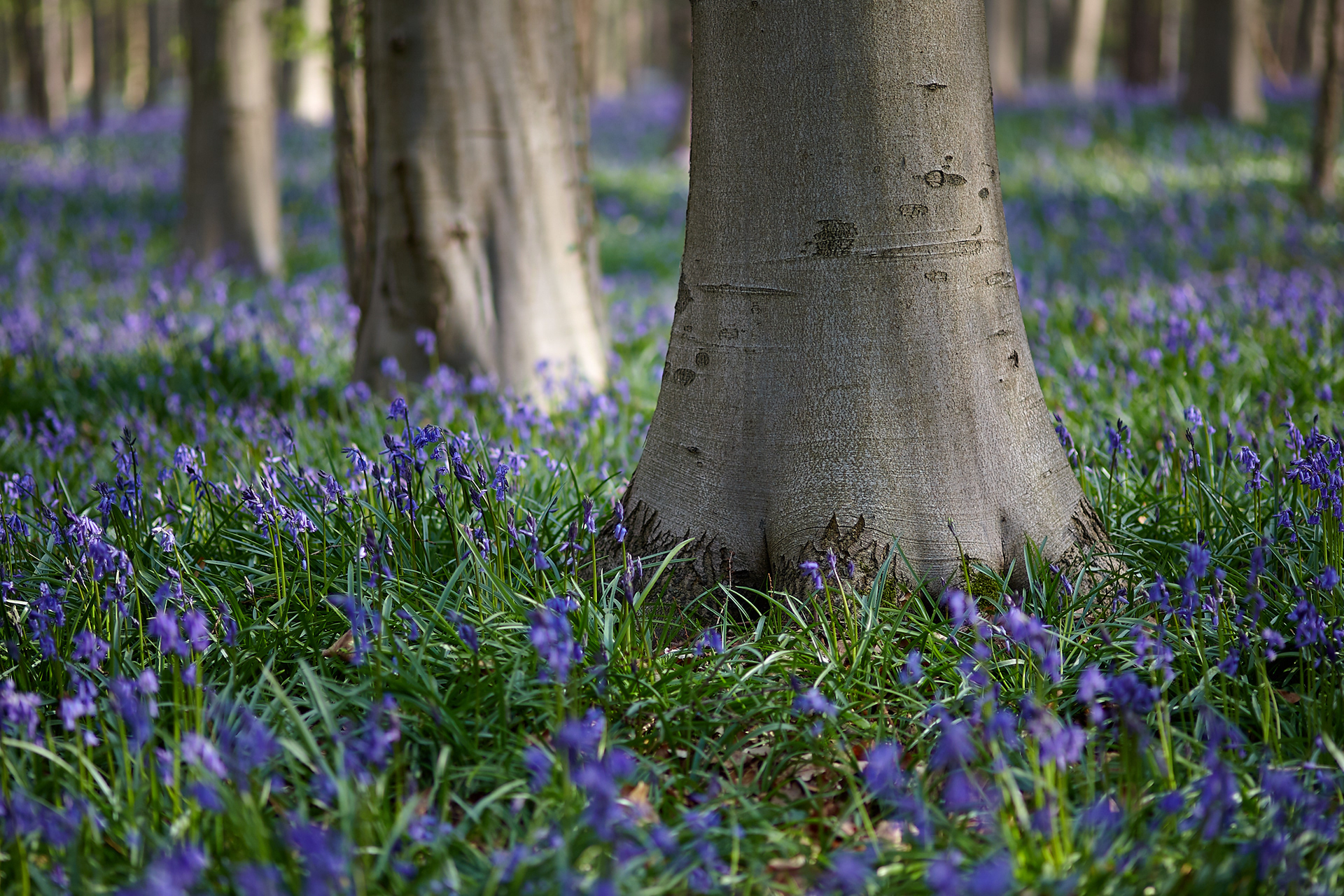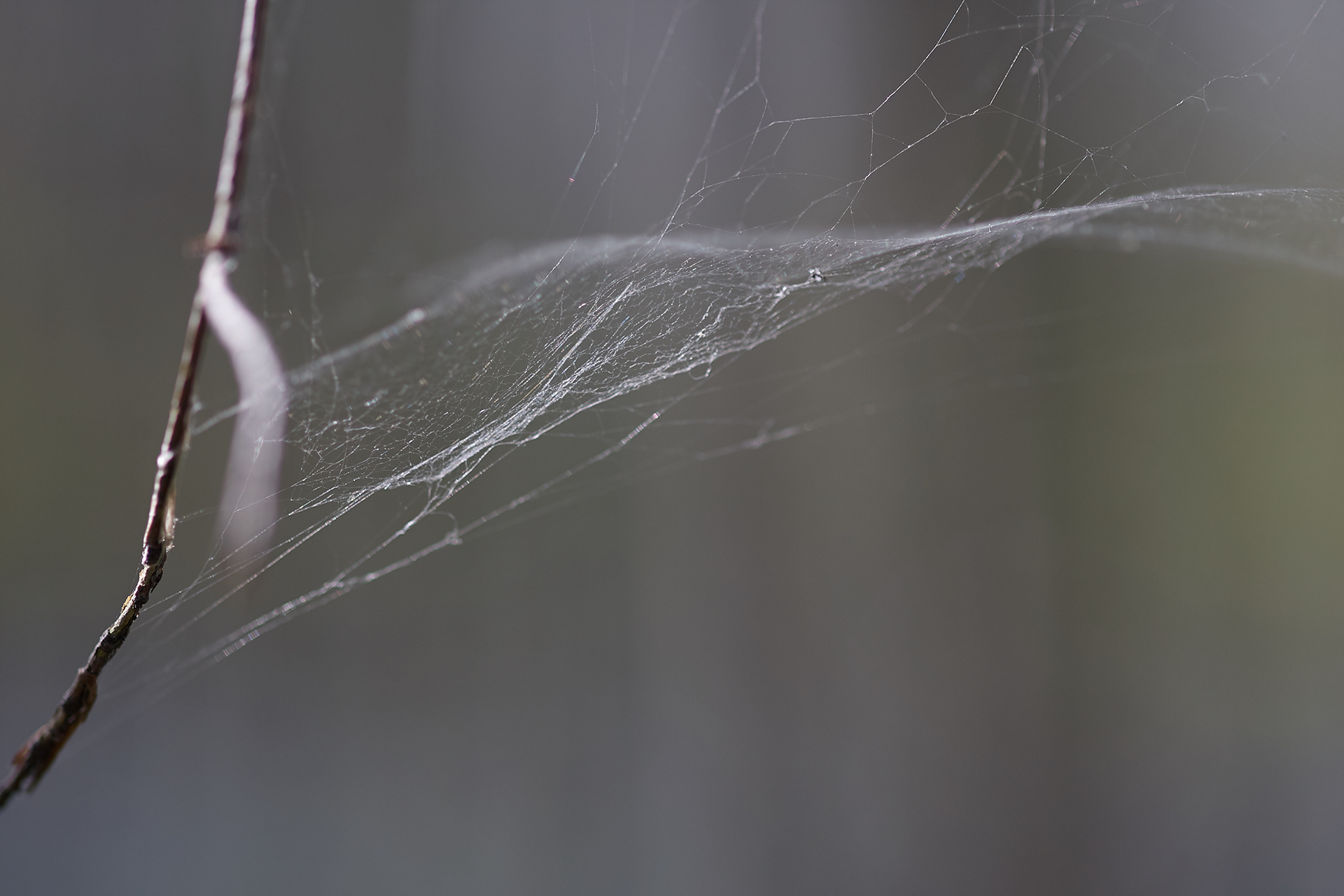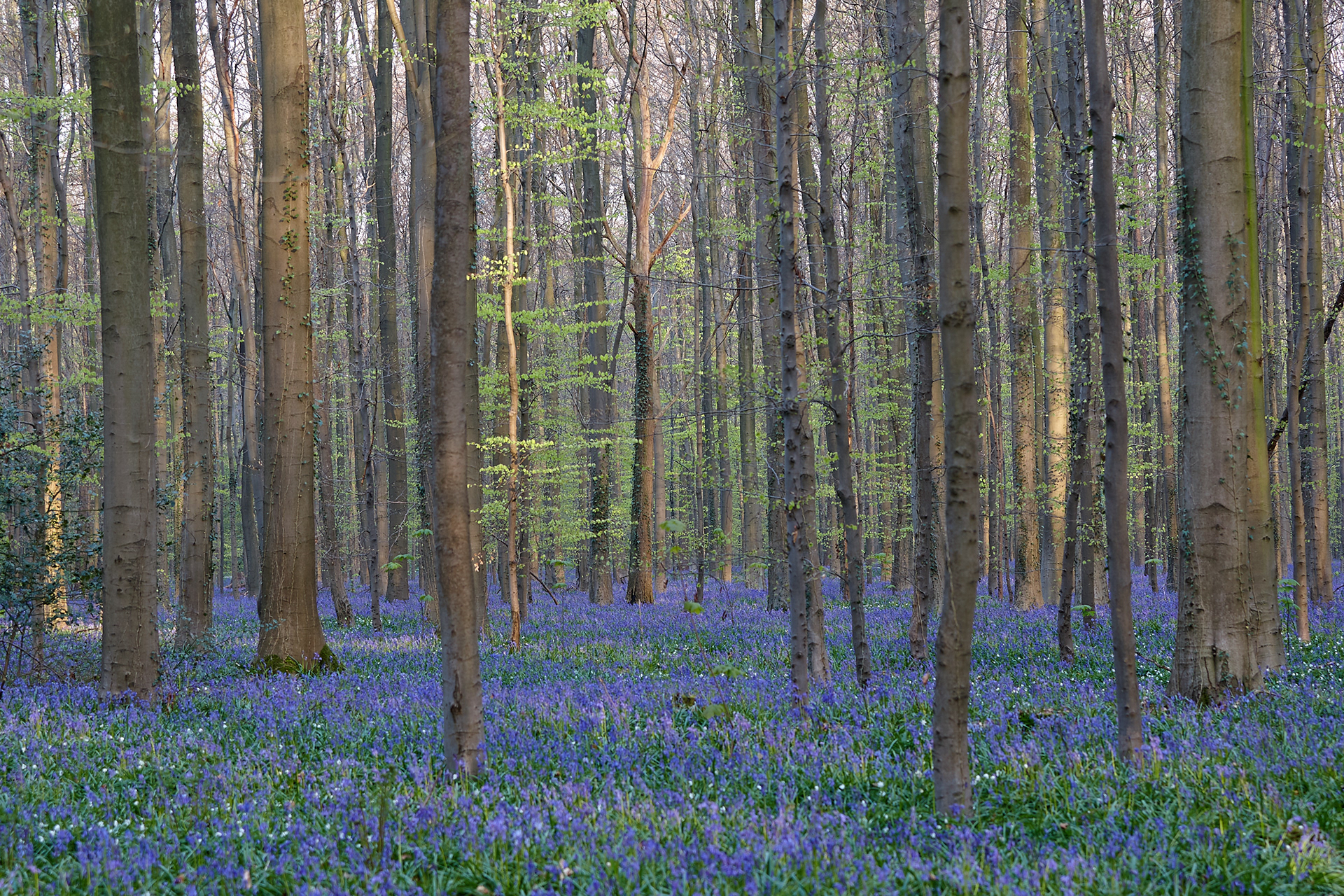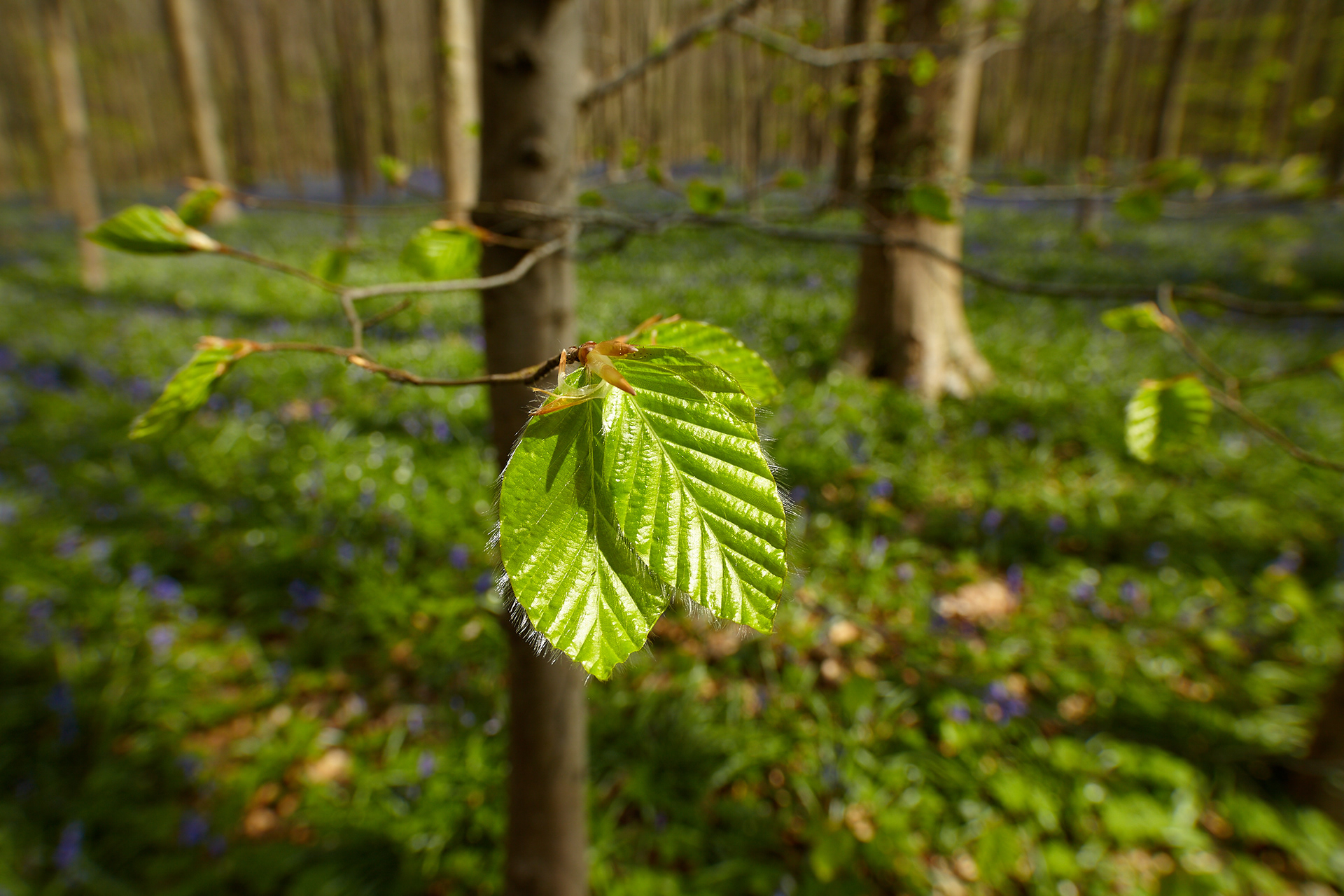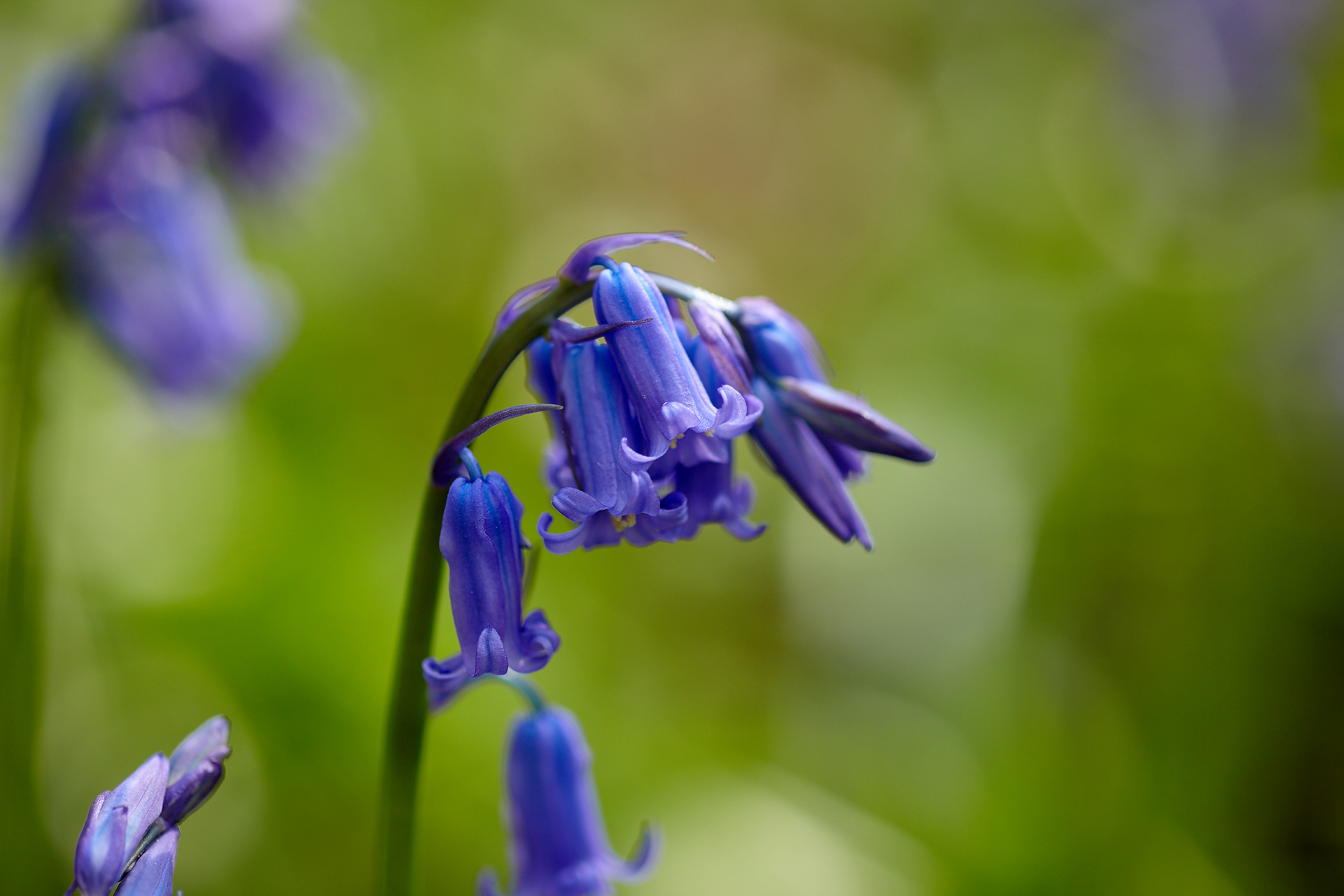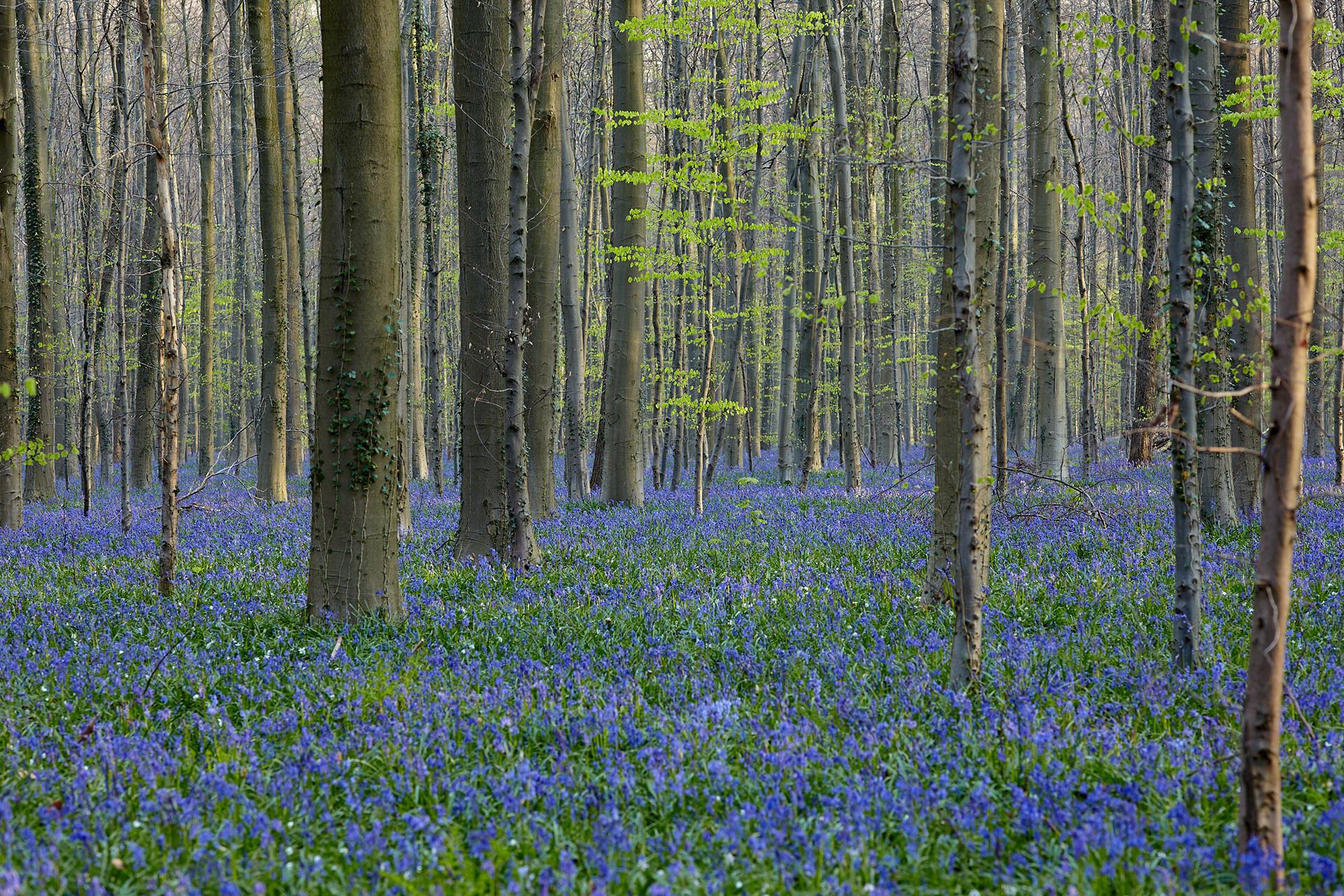Da un pò di tempo, insieme all’amico Valter Bernardeschi, accarezzavamo l’idea di visitare la foresta di Hallerbos (Foresta di Halle in fiammingo), un bosco misto situato a pochi chilometri a sud ovest dalla capitale belga, famoso per le fioriture di giacinto selvatico (Hyacinthoides non-scripta), che raggiungono il massimo del loro splendore tra la meta’ e la fine di aprile. E così, con un pò di rischio non conoscendo lo stato reale delle fioriture, un martedi sera decidiamo di partire. Sarà una lunga galoppata notturna (1180 km.)! Una foresta di giacinti è una perfetto esempio di simbiosi tra il bulbo del giacinto e l’apparato radicale filamentoso dei funghi. Ognuno cede qualcosa all’altro. Senza questa simbiosi tra fungo e pianta un tale quantità di giacinti in un bosco avrebbe, probabilmente, ben poche possibilità di insediarsi e di svilupparsi. L’intero bosco occupa una superficie di circa 530 ha., ma la zona interessata dalle fioriture è ben più piccola, una decina di ettari o poco più. Ovviamente non è possibile calpestare il sottobosco (in poco tempo non resterebbe più niente!) ma bisogna cercare di sfruttare le posizioni più vicine ai sentieri. O poco di più. Restiamo in foresta fino al tardo pomeriggio e quando la luce scema definitivamente non concedendoci altre opportunità dobbiamo trovarci un albergo per la notte. Giovedì mattina di buon ora siamo già sul posto, le giovani foglie dei faggi si illuminano ai primi raggi di luce che filtrano tra le chiome degli alberi, il colore dei giacinti cambia al cambiare della luce passando da un azzurro ad un blu intenso. Non si sà dove guardare!!! Sfruttiamo le luci del giorno fino all’ultimo minuto, scoprendo nel nostro girovagare sempre nuovi scorci e particolari che magari ci erano sfuggiti fino a pochi attimi prima. E siamo arrivati a venerdì mattina, ultimo giorno della nostra permanenza. Decidiamo di entrare alle prime luci dell’alba, sperando di catturare le prime brume che si alzano dal bosco con l’arrivo dei primi raggi di sole. Ma non saremo fortunati. La temperatura alla notte è ancora piuttosto bassa e sono ancora numerosi i boccioli non completamente aperti. Forse per vederla proprio al massimo splendore avremmo dovuto ritardare di un’altra settimana. Ma siamo già soddisfatti così. Abbiamo avuto due bellissime giornate di sole e considerando la latitudine e i capricci di questa primavera possiamo ritenerci fortunati.
From some time, his friend Walter Bernardeschi, toyed with the idea of visiting the forest Hallerbos (Forest of Halle, in Flemish), a mixed forest located a few kilometers southwest of the Belgian capital, renowned for its blooms wild hyacinth (Hyacinthoides non-scripta), which reach their maximum splendor between the goal 'and the end of April. And so, with some risk of not knowing the true state of blooms, a Tuesday evening we decide to leave. It will be a long night ride (1180 km.)! We arrive on Wednesday morning shortly after 10, and from the motorway that runs along a stretch of forest we see the distinctive "blue carpet". And once the sight of this miracle of nature is left speechless! Thousands and thousands of blue hyacinths bloom at the foot of the forest ........ not easy to fully reproduce the spectacle that presents itself before our eyes! This green "lungs" you are walking, running, playing, you are guided tours for tourists and schools but most of these people ignore what is fascinating and complex biology of bluebells. Unload the equipment and try to orient ourselves in this blue carpet, we have plenty of time and we must exploit to the fullest. The entire forest covers an area of approximately 530 ha. But the area affected by the bloom is much smaller, about ten hectares or more. Obviously you can not trample the undergrowth (soon there would be nothing!) But we should take positions closer to the trails. Or a little more. We remain in the forest until late afternoon when the light fades and definitely not giving us more opportunities we have to find a hotel for the night. Thursday early morning hours we are already in place, the young leaves of beech trees light up the first rays of light filtering through the trees, the color of hyacinths change as going from light blue to deep blue. No one knows where to look! Valter dedicated to the research in detail, I am particularly attracted by certain overviews, not always easy to reproduce. We use the light of day until the last minute, finding ever new views in our wanderings and details that maybe we had escaped until just moments before. And we get to Friday morning, the last day of our stay. We decide to enter at dawn, hoping to capture the first mists that rise from the woods with the arrival of the first rays of sun. But we will not be lucky. The temperature at night is still quite low and many are still not fully opened buds. Maybe just to see the peak we had to postpone for another week. But we are already satisfied with that. We had two beautiful sunny days and considering the latitude and the vagaries of this spring we can be lucky.
